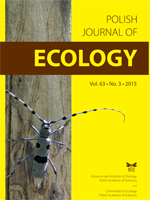The effects of the growing season climatic factors (i.e., temperature, precipitation, vapor pressure and relative humidity) on the growing season maximum normalized difference vegetation index (MNDVI), which can mirror the aboveground net primary production and the vegetation maximum absorbed ability of photosynthetically active radiation, were examined during the period from 2000 to 2012 on the Tibetan Plateau. The effects of climatic factors on the MNDVI changed with vegetation types, which was probably due to the fact that the changes of climatic factors differed with the type of vegetation. There was a significant increasing trend for the spatially averaged MNDVI of the vegetation area over the entire plateau. Approximately 16 and 3% of the vegetation area demonstrated a significant MNDVI increasing and decreasing trend, respectively. The MNDVI was significantly affected by relative humidity and vapor pressure, but not affected by temperature and precipitation over the entire plateau. Our findings suggested that the environmental humidity played a predominant role in affecting the variation of MNDVI over the entire Tibetan Plateau.
How to translate text using browser tools
1 September 2015
Interannual Variation of the Growing Season Maximum Normalized Difference Vegetation Index, MNDVI, and Its Relationship with Climatic Factors on the Tibetan Plateau
Shao-Hua Wang,
Wei Sun,
Shao-Wei Li,
Zhen-Xi Shen,
Gang Fu
ACCESS THE FULL ARTICLE

Polish Journal of Ecology
Vol. 63 • No. 3
September 2015
Vol. 63 • No. 3
September 2015
index-NDVI
normalized difference vegetation
Precipitation
relative humidity
temperature
Tibetan plateau
vapor pressure




